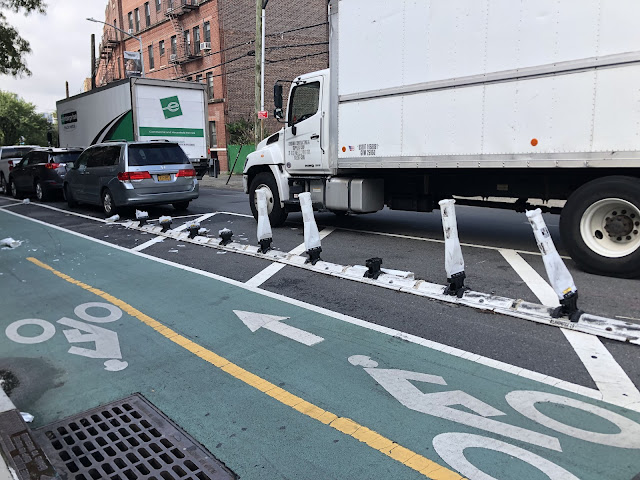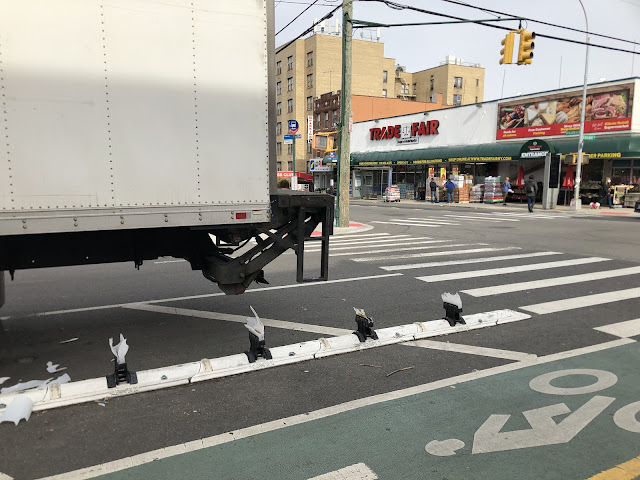In previous posts, I’ve written “lines of paint do not a bike lane make.”
I admit it’s not Shakespearean. (Then again, what besides Shakespeare is?) But I think it sums up at least one major flaw in too much of bicycle infrastructure planning.
Now I have to come up with another catchy line—for bollards.
I was greeted with this scene at the other end of my block. The city’s Department of Transportation probably believed cyclists like me would be thrilled to have a bike lane running down our street. But I, and some other cyclists, are among its most vocal critics.The lane isn’t wide enough for two-way bicycle traffic, let alone the eBikes, mini-motorcycles and motorized scooters that, most days, seem to outnumber unassisted pedal bicycles.
Moreover, as you can see, bollards offer little more protection than lines of paint. On more than one occasion, I have seen drivers use the bike path as a passing lane—when cyclists are using it. I can understand ambulances or other emergency vehicles passing in the lane (as long as bicycles aren’t in it, of course) because Mount Sinai hospital is on the lane’s route. But some drivers, I think, pass in the lane out of frustration or spite.
The situation has been exacerbated by the recent construction in the neighborhood. I suspect that the bollards were crushed by a truck pulling toward or away from one of the sites. I also suspect that the destruction wasn’t intentional: In my experience, commercial truck drivers tend to be more careful than others and when they strike objects—or cyclists or pedestrians—it tends to be because the drivers didn’t see them.
Anyway, what I saw underscores something I’ve told friends and neighbors: Sometimes, the most dangerous part of my ride is the lane that runs in front of my apartment!








